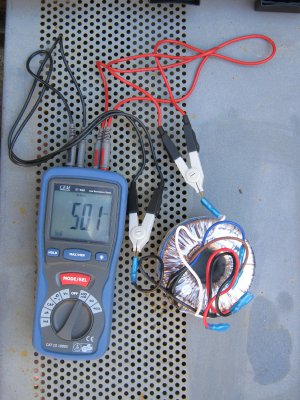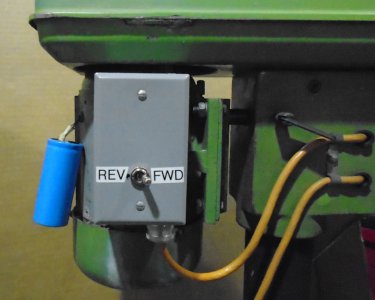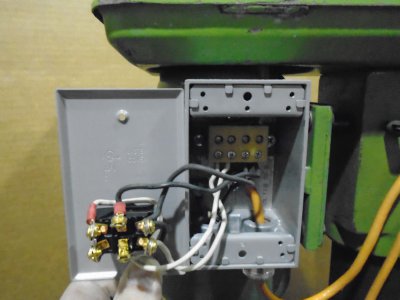Thanks so much to each of you who have replied. All very helpful. I'm pretty good with some things but the electrical innards of split phase motors isn't one of them. Regarding safety, funny brino mentioned that. I unplugged the power cord and draped it over the belt guard so the plug was in close proximity to my face. Note to self: If you can't see the naked plug, maybe it's not safe.
Life overtook my plans today so I had very little time to deal with it, but I did make some progress.
The four wires from the motor housing were all coated with grey paint (primer?) so I used acetone to remove enough paint to see if the insulation colors were unique. They aren't. From left to right in the photo of the terminal block, #1 is blue, #2 is green, #3 is also blue but I left the paint on it so I'm calling it grey, #4 is also green. The two green wires, #2 & #4, are of lighter gauge (maybe 18 or 20) than the other two (maybe 14 or 16). I found 1Ω across #1 and #3 (I presume they are the run winding). As predicted, there was momentary continuity across #2 and #4, then it went open.
At that point, reality intervened so I had to move on. Tomorrow, rather than unsoldering a capacitor lead, I'll do as RJSakowski suggested and check from either side of the capacitor to #2 and 4. I want to verify the function/connection of the centrifugal switch by spinning up the armature with a cordless drill. I plan to use a large pot magnet to couple the drill to the motor pulley. I should post a picture if it works properly.
Thanks again. Back tomorrow.



